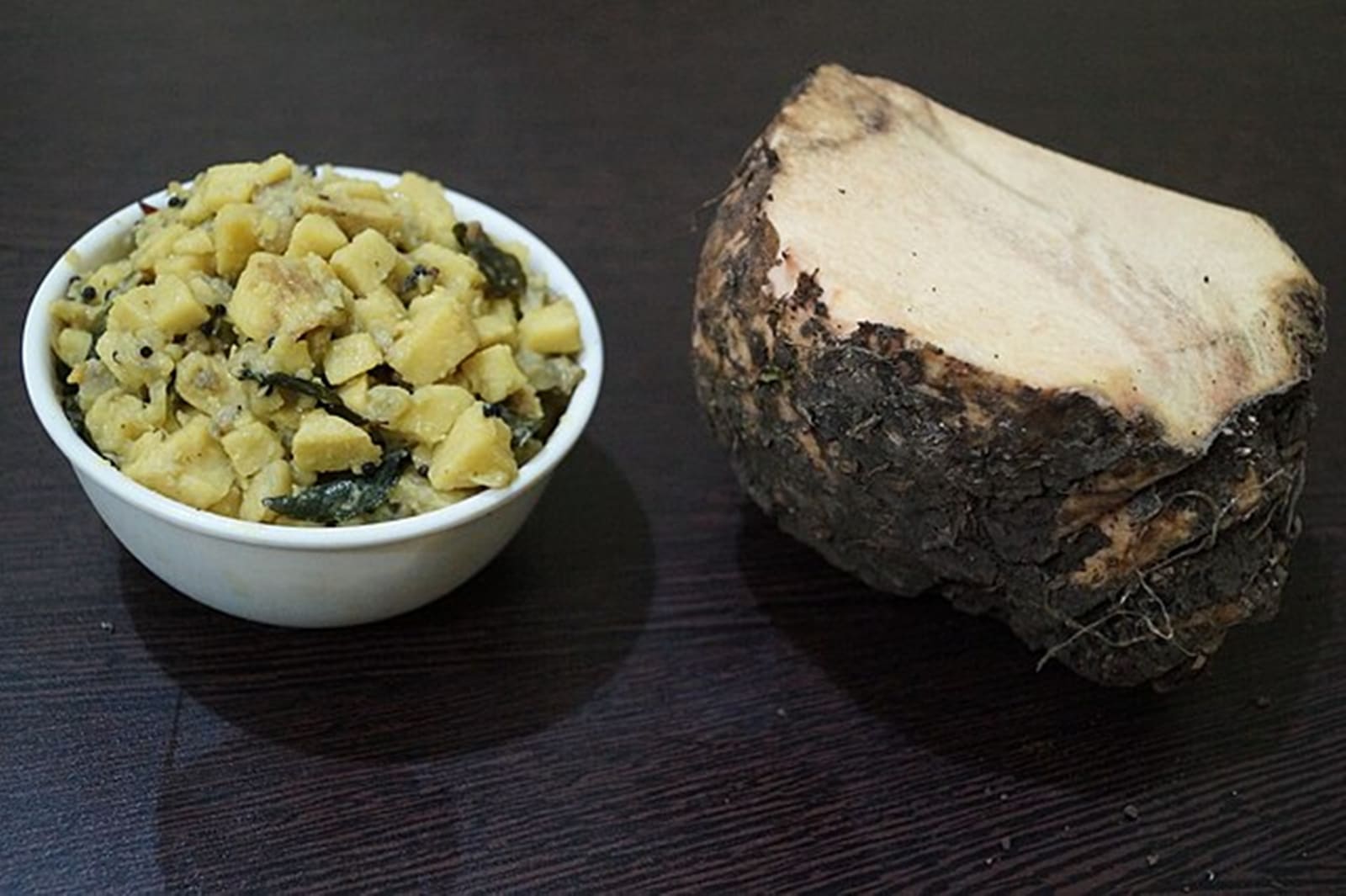📣 For more lifestyle news, click here to join our WhatsApp Channel and also follow us on Instagram
5 weird but delicious ingredients you can only find in India
India’s diverse regions bring some of the world’s most unusual ingredients to the table. Learn about these odd-looking but delicious local treasures.
 These long, thick white stems are often sold in Delhi markets, cut to reveal a beautiful lace-like interior. (Photo: Wikimedia Commons)
These long, thick white stems are often sold in Delhi markets, cut to reveal a beautiful lace-like interior. (Photo: Wikimedia Commons)Escargots and Frog’s Legs in France. Blood Pudding in England. Rhubarb in America. Brussels Sprouts. Bamboo Shoots. Fermented Fish. Yak Cheese. Every culture—and often every community within a culture—has ingredients that feel commonplace locally but utterly exotic elsewhere. I still remember the first time I ate rhubarb in a dessert; in India, it’s rare unless imported. Much like artichoke hearts, which I love, some ingredients are not just unique to India but also often specific to a region. Here’s my taster’s menu of unusual but delicious Indian ingredients.
Thor (Banana Stem)
Known as bharali in Bengali, thor is the crunchy, fibrous centre of the banana plant. Bengalis, like many tropical coastal cultures, use every part of the banana. Thor-er chhechki—a simple dry stir-fry—is one of the easiest dishes to make with it. The prep is the most time-consuming part: thin, floss-like fibres must be removed, or the stem can be unpleasant to eat. Seasoned simply with turmeric and tempered spices, it’s a dish worth trying. Thor is considered a natural diuretic, rich in vitamin B6 and potassium, and adds a unique texture to meals.
 Thor-er chhechki—a simple dry stir-fry—is one of the easiest dishes to make with it. (Photo: Freepik)
Thor-er chhechki—a simple dry stir-fry—is one of the easiest dishes to make with it. (Photo: Freepik)
Jimikand (Elephant Foot Yam)
With a name as musical as its appearance is striking, Jimikand is popular in North India. Its thick, dark, gnarled skin resembles an elephant’s foot. I’ve never been drawn to it as a vegetable, but Jimikand chips are delightful. This starchy root is packed with vitamins, minerals, dietary fibre, potassium, and Vitamin C. Preparation can be tedious due to its tough exterior, but once peeled, it can be boiled, fried, roasted, mashed, or made into chips. A simple recipe: slice the yams, sprinkle them with turmeric, red chilli powder, lemon juice, and salt, then shallow-fry until crisp.
Kamal Kakri (Lotus Stem)
I first discovered Kamal Kakri over 25 years ago when tasting authentic Kashmiri cuisine. These long, thick white stems are often sold in Delhi markets, cut to reveal a beautiful lace-like interior. The crunchy, starchy texture becomes potato-like once cooked. Lotus stems are versatile—perfect in curries or sliced and fried.
 With a name as musical as its appearance is striking, Jimikand is popular in North India. (Photo: Wikimedia Commons)
With a name as musical as its appearance is striking, Jimikand is popular in North India. (Photo: Wikimedia Commons)
Arbi (Taro)
Root vegetable enthusiasts, meet Arbi. Tougher than a potato, this starchy root is a delicacy in both India and Pakistan. Its leaves, shaped like elephant ears, are also prized. The root must be peeled and boiled or steamed before cooking, then fried, sautéed, or used to make curry.
I often wonder who first cracked open a coconut or dug up a Yam or Arbi, both of which look like rocks, only to discover a delicious treasure inside. India has countless unique vegetables across its regions—but we’ll save the rest for another time.
Next week, we’ll do a Diwali special, featuring unusual sweets—from Khaman ka Ladoo to Malai na Khaja—to mix things up this festive season.
📣 For more lifestyle news, click here to join our WhatsApp Channel and also follow us on Instagram





- 01
- 02
- 03
- 04
- 05























